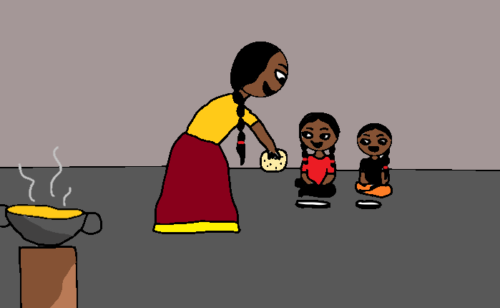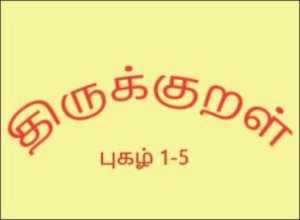Children’s Life Experiences Before Adoption
In today’s episode, we’ll look at how children’s pre-adoption history has lasting effects on their education.
Studies conducted in other countries show that ADHD and other learning needs are higher amongst adopted children. Since psycho-educational evaluations and identifying learning needs are not as streamlined in India, we can’t say that ADHD and other learning disabilities occur at the same rate amongst adopted children in India. But looking at the problems that affect our society, such as poverty, malnutrition, and overcrowding, we can safely assume that the contributing factors discussed in these studies are relevant to our children too.
Due to their socioeconomic status, children eligible for adoption face both early environmental deprivation, and malnutrition during the vital early years.
The American Psychological Association dictionary describes environmental deprivation as an absence of environmental conditions that stimulate intellectual and behavioral development, such as educational, recreational, and social opportunities. This includes anything from not having a clean bathroom to a safe place to play. The disparity starts before birth—in the nutrition and level of prenatal and postnatal care the mother receives. There may also be complications at birth without adequate medical care. Genetic factors—hereditary conditions that children may inherit too, play a significant role in learning. Any of these factors can contribute to a learning disability that shows up when children start formal schooling.
Poverty results in inequalities in opportunities, whether these are stimulating experiences in early childhood programs, a timely diagnosis and treatment of common problems like poor vision or hearing impairment, or even other complicated medical issues. Poverty does not limit only educational opportunities. Living in tight spaces, uncertainties over when and where your next meal will come from, experiencing domestic violence and communal violence result in complex trauma. Each of these is a traumatic experience, and children living in poverty experience these repeatedly. What are the consequences of this quality of life? It results in a gap in the language and cognitive skills needed for reading and maths. That’s not all! There is also a delay in the non-cognitive but equally essential skills like planning and organization.
Once they reach school age, some children attend schools while living with their birth parents or at the institution. In India, these schools’ curriculum and standards of instruction are markedly different from the schools to which middle- and upper-class parents send their children. Teachers are not aware of or trained to identify when a child has learning disabilities. Nor are they equipped to provide relevant services. Limited interactions with their typical peers restrict the opportunities for children to develop age-appropriate social skills. Instead of acquiring the fundamentals of reading, writing, and maths, the learning gap widens for these children.
Next, we must consider the impact of living in an institution. How long did they stay in the institution? In India, the siblings don’t necessarily stay in the same institution, even if they are of the same sex. So, if your children are siblings, did they stay together, or were they separated? What level of care did they receive? Were the caregivers equipped to address the trauma of separation or other emotional and educational needs? Was the institution a safe place, or were the children subject to physical, sexual, and emotional abuse? Were the children given nutritious food, and did they have recreational time in their day?
True, not all institutions are alike in the care they provide. In some orphanages, the poor quality of care may affect all aspects of the children’s growth—their health, nutrition, stimulation, and emotional development. Others may provide everything needed to meet their physical needs, such as nutrition, and still others may take care of the whole child, i.e., their physical, cognitive, and emotional needs. But no matter how well run, living in an institution does not allow the children to form stable long-term relationships with a consistent, caring adult as is possible in a family.
A couple of years after the adoption, our oldest child was always angry at her siblings. She loved them a lot, but she felt that it was unfair that she’d had to care for them when she was their age. “I never got to do the things they do now because I was cooking, cleaning, and making sure they were fed and safe!” Necessity made their mother expect her six-year-old to make chapatthi and watch the others while she was away at work. These were unfair conditions for both parent and child. So when our oldest came to live with us, her math and reading skills were five years below her age group. We had to help her process this anger to repair her relationship with her siblings and overcome her feeling of being ‘too stupid’ if she asked for help in class before seeing any improvement in her academics.
Our children spent a little over three years in an institution. The older girls ‘X’ and ‘Y’ lived in one institution while the youngest ‘Z’ was in a different centre that cared for very young children. The level of care at both these places couldn’t be more different. For reasons best known to them, child ‘Y’ had a ‘nanny’ figure in her life who hand-fed her and cared for her while the other child ‘X’ was one among the rest. There was a difference even in the type of food the sisters got. Child X was terrified of authority figures because she had been hit so much in the institution. We even made it a point to approach her from the front so she could see us and our hands. This treatment in the institution had left a lasting impression on Child ‘X,’ and she was not always emotionally available for learning. How much can you attend in the class if you are all afraid?
Our priority was to ease her anxiety and build trust before emphasizing good study habits. X was street smart! She mastered the art of covering up her lack of understanding because she was afraid of the consequences. She googled answers and wrote the assignments in her beautiful cursive writing. Her teachers and I continue to reassure her that she would not get into trouble if she made mistakes or said that she didn’t understand the directions. Even after many years, we guide X to present her own work and not copy-paste from google.
On the other hand, our youngest ‘Z’ had a completely different need. As the kids grew to trust us, they shared that ‘Z’ had been thrown as a baby and sustained injuries. Her caregivers didn’t know much about it because the older siblings were at another institution. But this piece of knowledge allowed us to recognize certain patterns in her education and we continue to find appropriate ways to meet her needs.
When we understand how children’s life experiences before adoption impact their physical, cognitive, and emotional growth, we are better prepared to support them.
Next week, we’ll look at how children’s experiences after the adoption impact their education.
Read more on the different stages of understanding in adopted children here!
Other episodes in this series:
Educational Needs of Adopted Children





